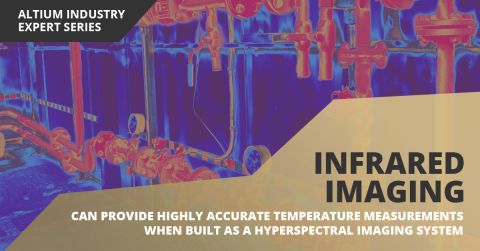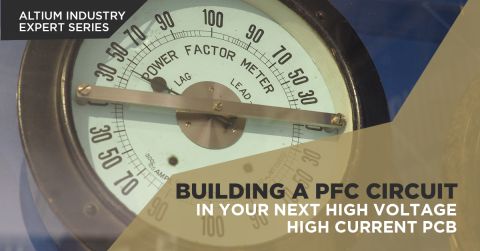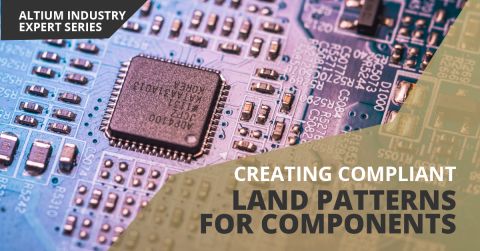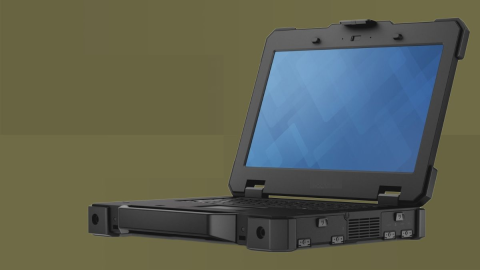Important Thermal Properties of PCB Substrate Materials

A lot of designers tend to focus on potential signal integrity problems when selecting PCB substrate materials. This is definitely understandable; high speed/high frequency devices require low losses and flat dispersion within the relevant bandwidth to prevent signal distortion, and this is often a starting point for selecting PCB substrate materials. However, dielectric properties are not the full story of your laminate materials.
Your PCB substrate materials also have some important thermal properties that should be considered during design. Not all boards will be deployed in harsh environments, but those that are need to remain reliable throughout their lifetime. High temperatures, repeated thermal cycling, moisture uptake, and a low glass transition temperature can create problems during manufacturing and operation. If you pay attention to the right thermal properties of your substrate materials, you can ensure signal integrity and reliability.
Pay Attention to PCB Substrate Material Properties
Signal integrity relies on the dielectric constant of your PCB substrate material. The major problem with reading these values off of datasheets is that the quoted value depends on the method used for measurement. Jon Coonrod discusses this point in a recent podcast. This is less of an issue with thermal properties. There are several important thermal properties to consider when selecting PCB substrate materials.
Thermal Conductivity vs. Thermal Resistance
Thermal conductivity probably receives the most attention among all the possible properties of PCB substrate materials (after loss tangent, of course). This is sometimes used interchangeably with thermal resistance. Although the two are related, they are not the same.
Thermal conductivity is the thermodynamic analogue of electrical conductivity. It defines the rate at which heat is transported along a temperature gradient per unit area. The thermal resistance of your PCB substrate depends on a related quantity, which is the effective thermal conductivity. The effective thermal conductivity is proportional to the individual thermal conductivity values of each material (copper, core/prepreg, resin, etc.) on the board. Datasheets quote a thermal conductivity value for a bare laminate material.
If you need to quickly dissipate heat from components, then you need a larger thermal conductivity. Some alternatives to FR4 can provide much higher thermal conductivity. Ceramics are one notable example, as they have very high thermal conductivity values compared to glass weave laminates. Metal-core substrates are also an excellent choice; these materials are typically used with high power LED boards.

Coefficient of Thermal Expansion (CTE)
Every material expands or contracts as temperature changes. CTE values define how much the volume of a material increases when its temperature increases. Unless you’re working with water below 4 °C, CTE values are always positive. For copper, the coefficient of thermal expansion is ~17 ppm/°C, while this value varies for different substrate materials, a typical value for FR4 is 11 along the board surface and 15 perpendicular to the board surface. Other materials, such as ceramics, can have a broad range of CTE values. As an example, aluminum nitride is very useful for its high thermal conductivity, but the CTE value is quite low (from 4.3 to 5.8 ppm/°C).
CTE is important both at high temperature and when the board temperature is repeatedly cycled between high and low values. During cycling, the board will expand and contract, which places stress on copper elements, and this stress is larger when the mismatch between the substrate and copper CTE values is larger. The CTE values for your conductors and substrate materials should match as closely as possible.
For low aspect ratio vias and reasonably thick traces, a CTE mismatch is not such a problem. However, high aspect ratio vias will experience stress concentration in the middle of the barrel and at the neck, requiring a thicker plating or filling to ensure a conductive path if a via cracks. In HDI boards, repeated stress accumulation due to cycling is known to lead to cracking at via necks.

Glass Transition Temperature (Tg)
This quantity is related to CTE. The CTE value of any material generally increases with temperature. Glass transitions tend to occur in amorphous materials; once the temperature of a material exceeds its glass transition temperature, the slope of the material’s CTE vs. temperature curve experiences a steep increase. This means the material experiences greater expansion with temperature changes when the temperature exceeds Tg.
In glass-weave substrate materials, one way to increase the range of useful temperature values and avoid a glass transition is to use a substrate with a high-Tg resin. Standard FR4 has a Tg value of ~130 °C, but a substrate with a high-Tg resin can bring the Tg value up to ~170 °C. If your substrate and conductor CTE values were closely matched at low temperature, and your board will operate at high temperatures, then you should opt for a substrate with a higher Tg value.
Most boards will probably not run above the standard ~130 °C Tg value. What is more important is the stability of CTE as a function of temperature, as an excessive CTE value at high temperature creates more stress on thin conductors. If your board will be frequently cycled to high temperatures, I would opt for a more stable CTE value that is close to the conductor CTE value.
Your Designs Are a Balancing Act
As much as we would like, no design will fulfill every signal integrity and thermal management requirement, and compromises need to be made. When it comes to thermal properties, repeated cycling up to high temperature may need to take priority over loss tangent and dielectric constant in some boards. If you aren’t working at high speed, high frequency, or high voltage, you may want to focus less dielectric properties and focus more on thermal properties to ensure reliability.
The high-quality design tools in Altium Designer® include an extensive stackup materials library with standard values for the thermal properties presented here, as well as dielectric properties. These data are easily brought into the pre-layout and post-layout simulation tools in Altium Designer, giving you the power to quickly analyze your thermal management strategy. You’ll also have access to a broad range of tools for managing component data and preparing for production.
When you’ve finished your design, and you want to release files to your manufacturer, the Altium 365™ platform makes it easy to collaborate and share your projects. We have only scratched the surface of what is possible to do with Altium Designer on Altium 365. You can check the product page for a more in-depth feature description or one of the On-Demand Webinars.









